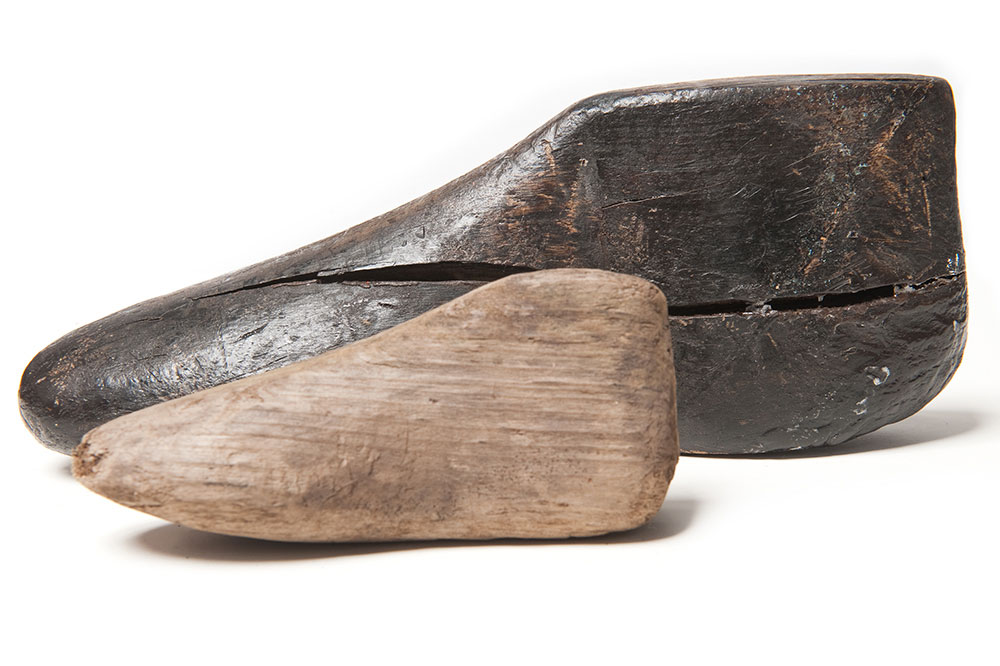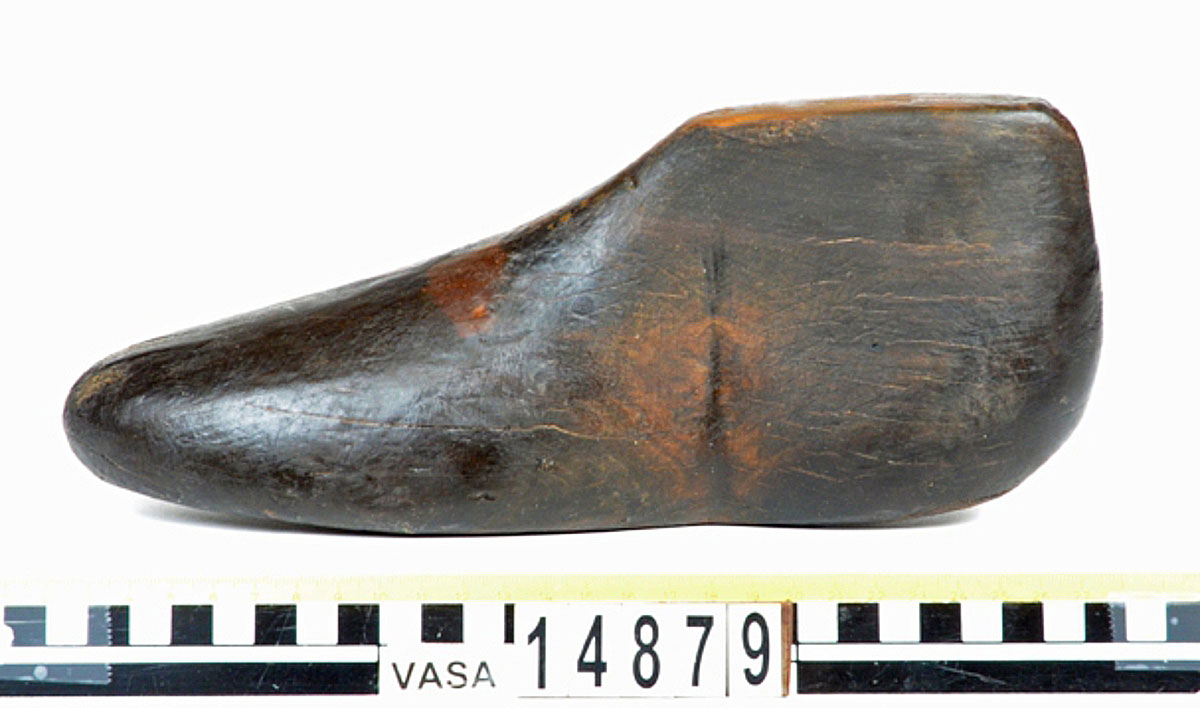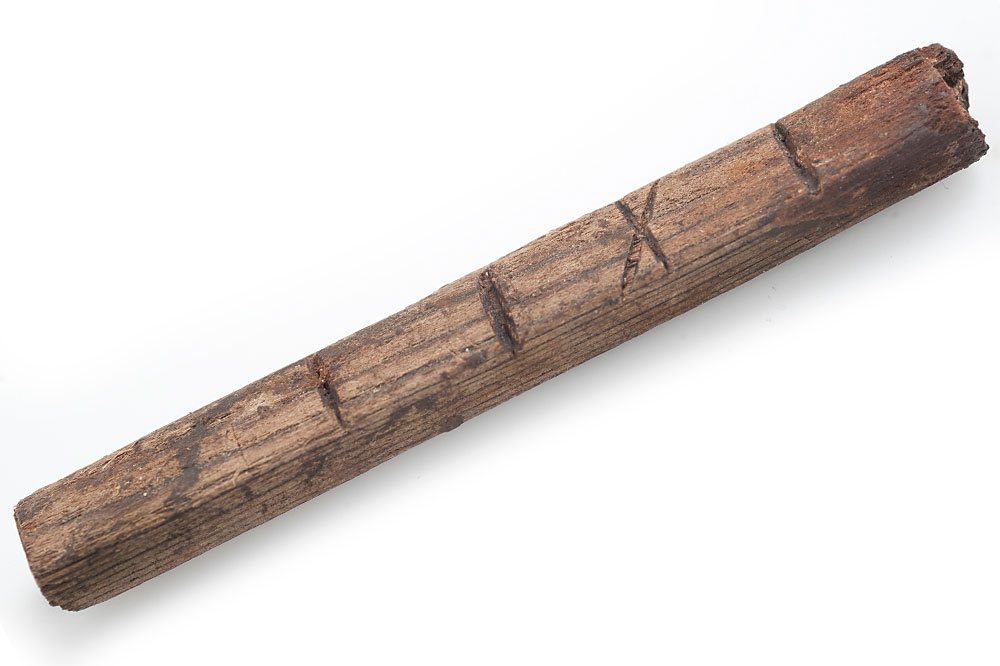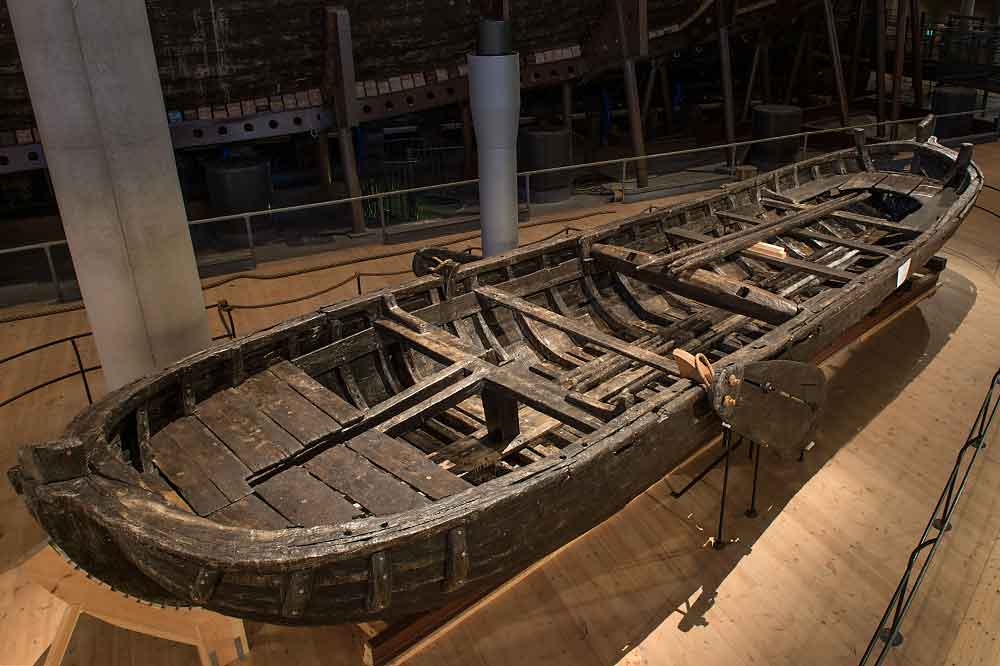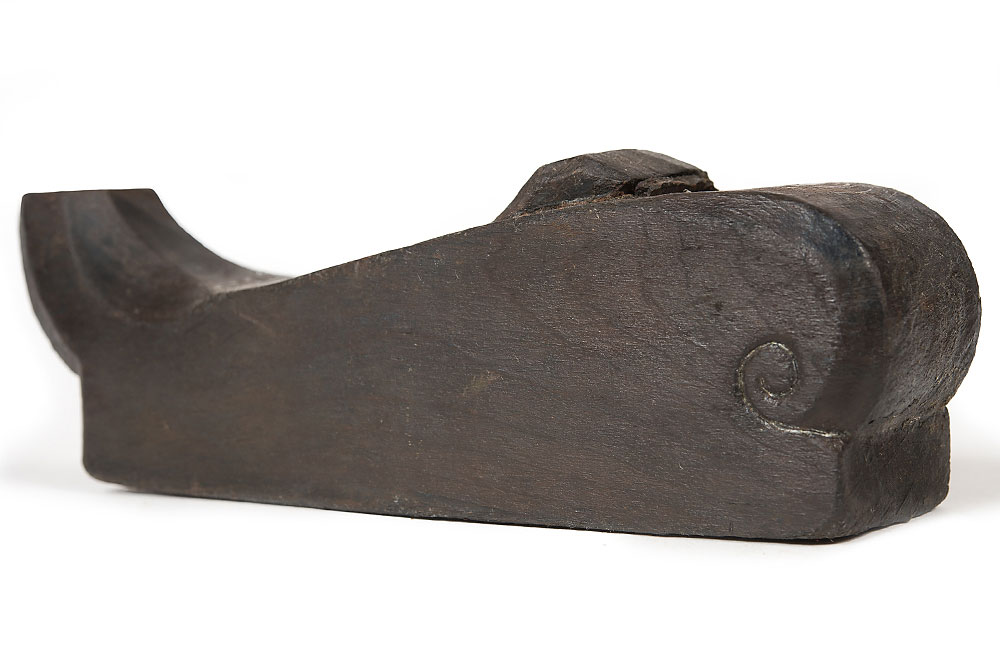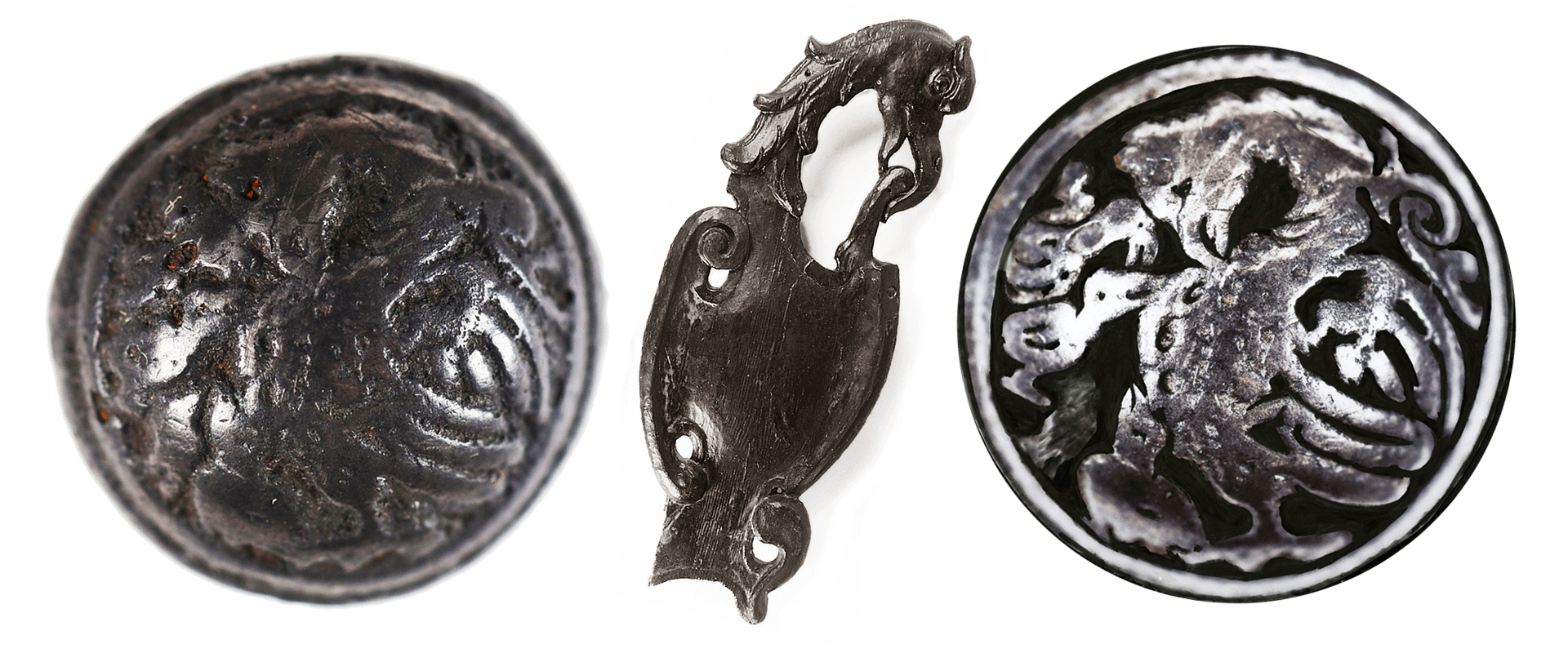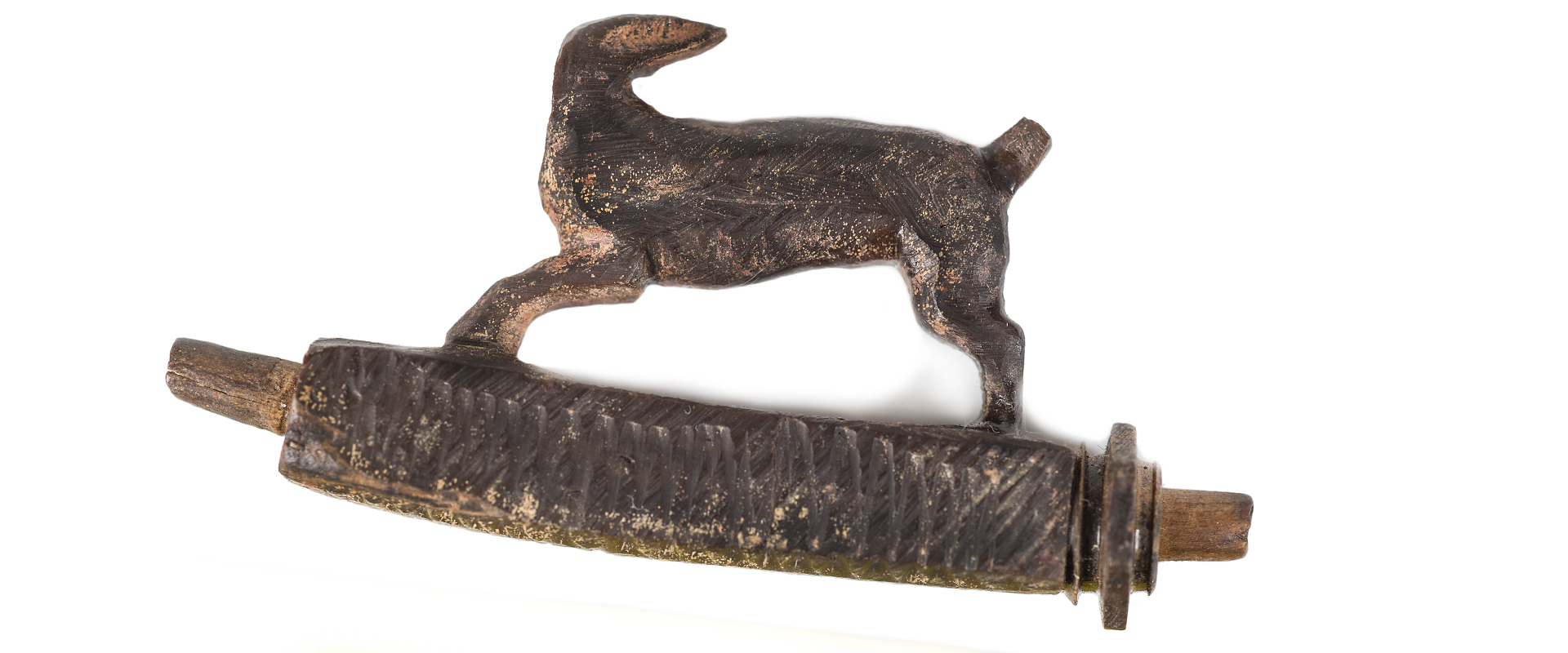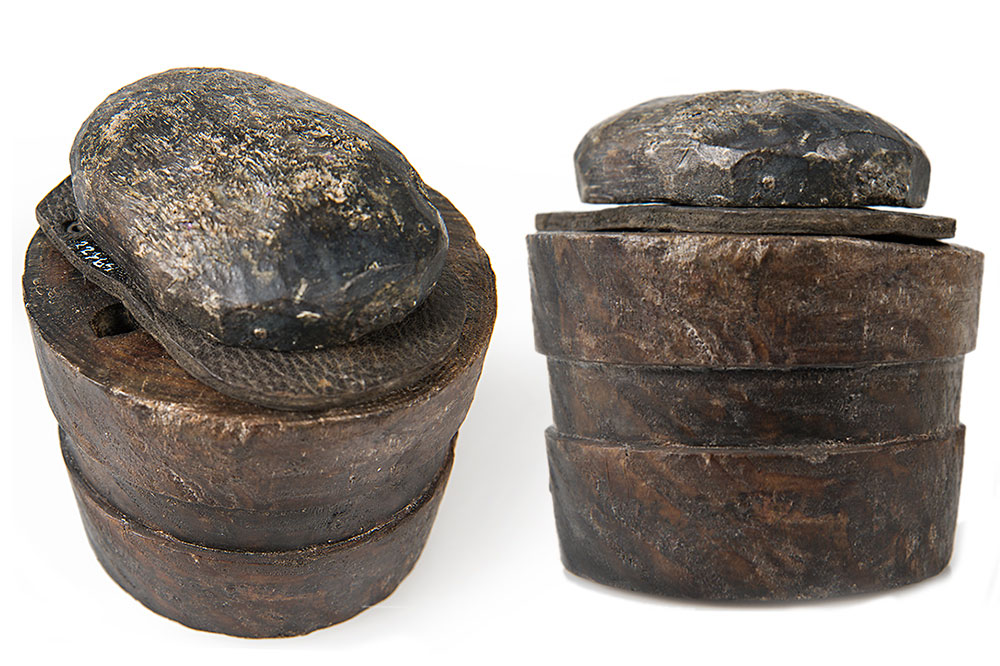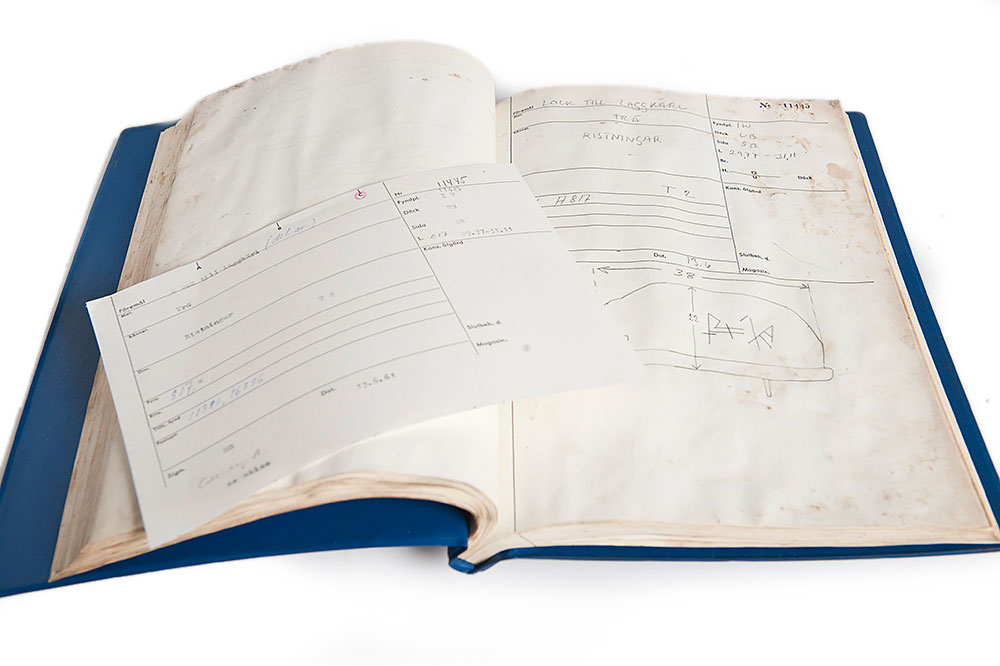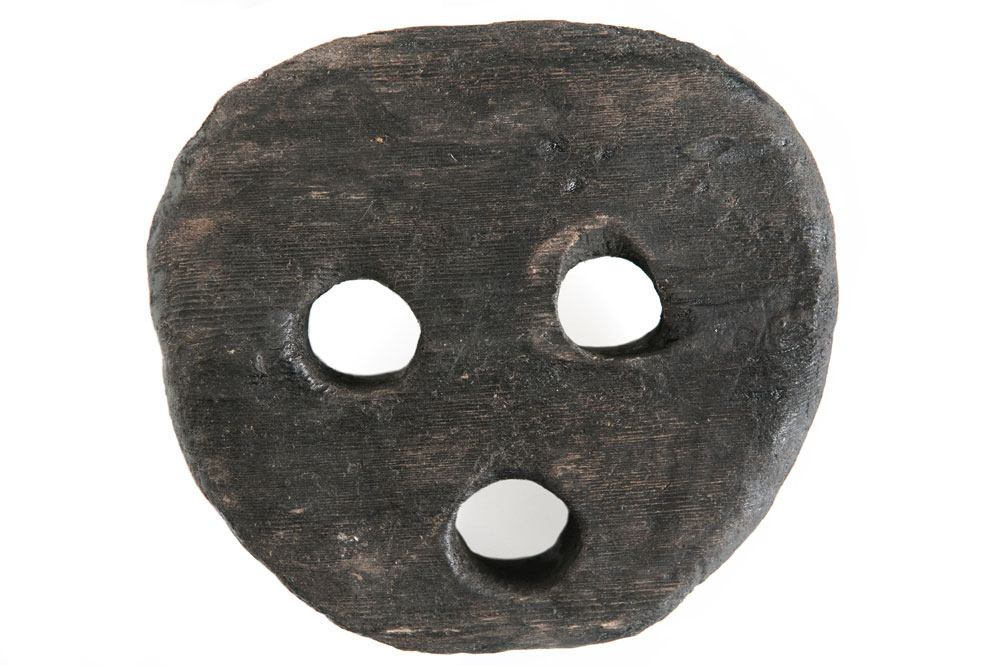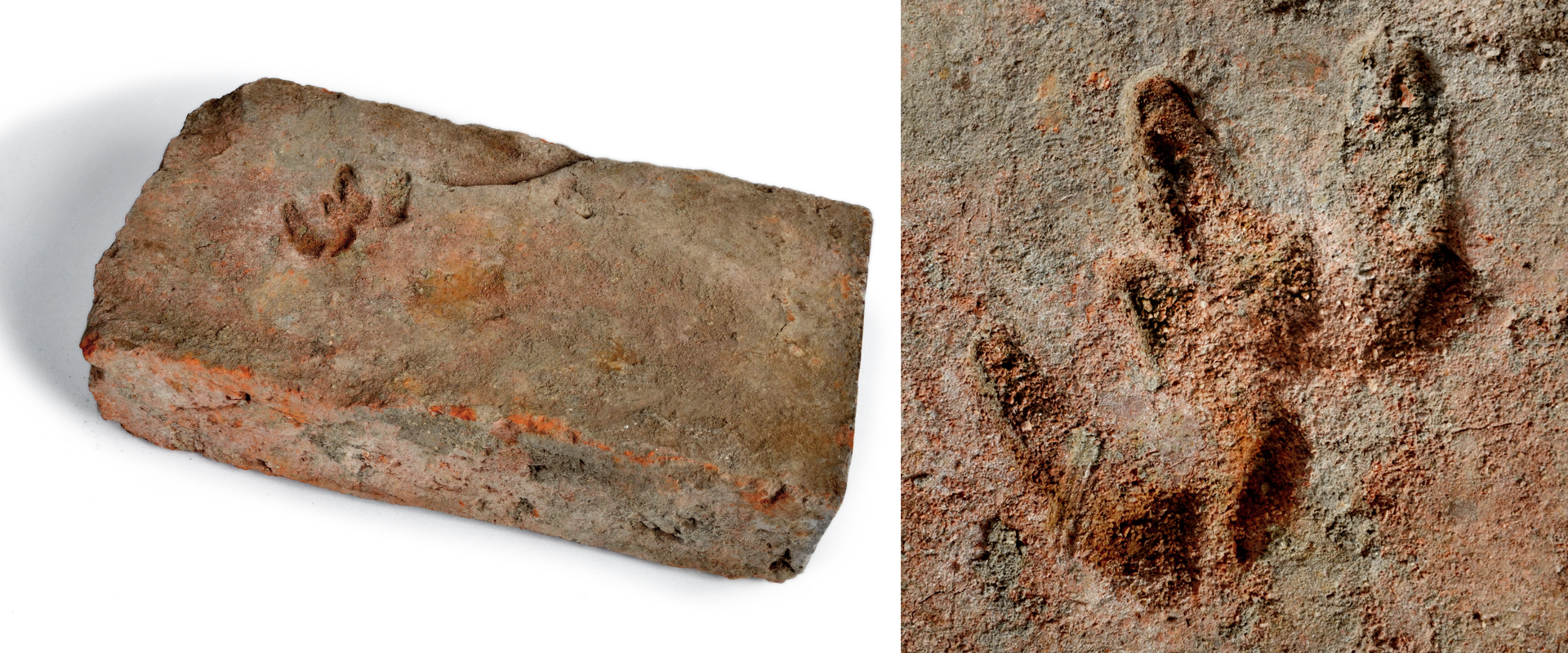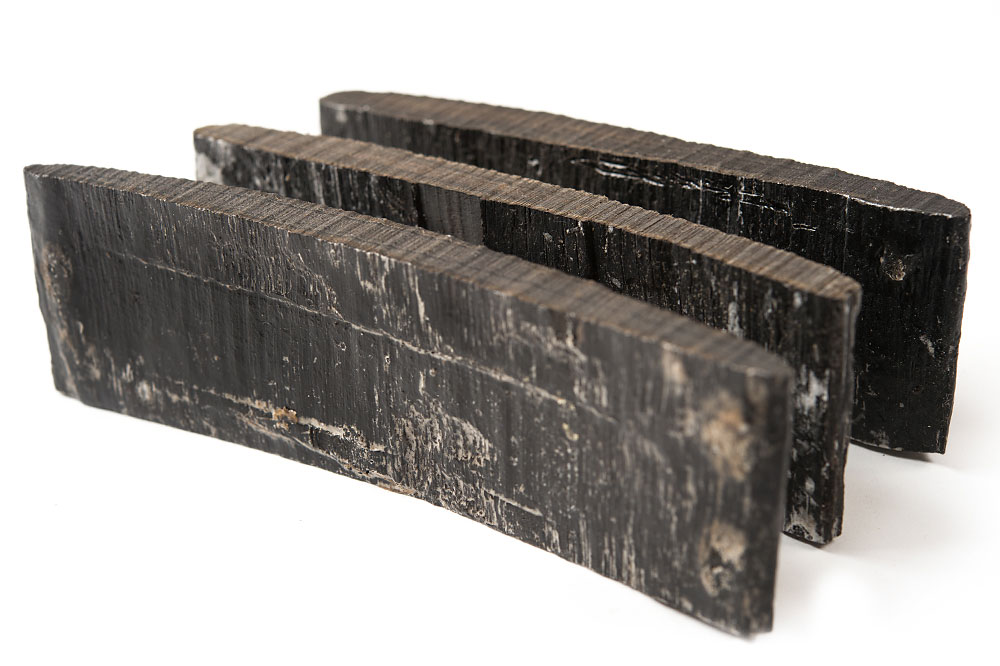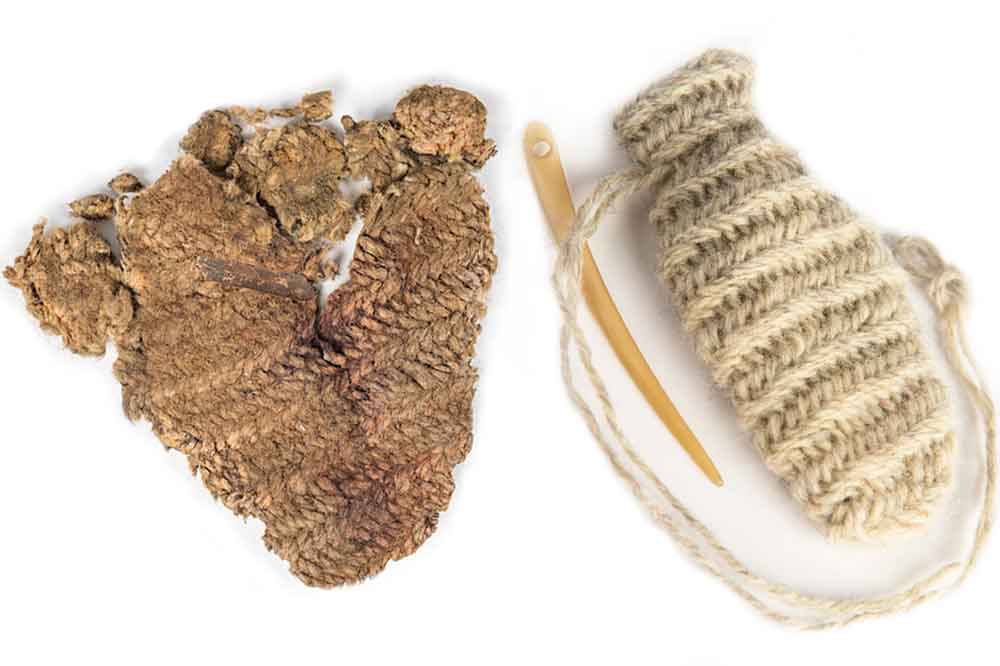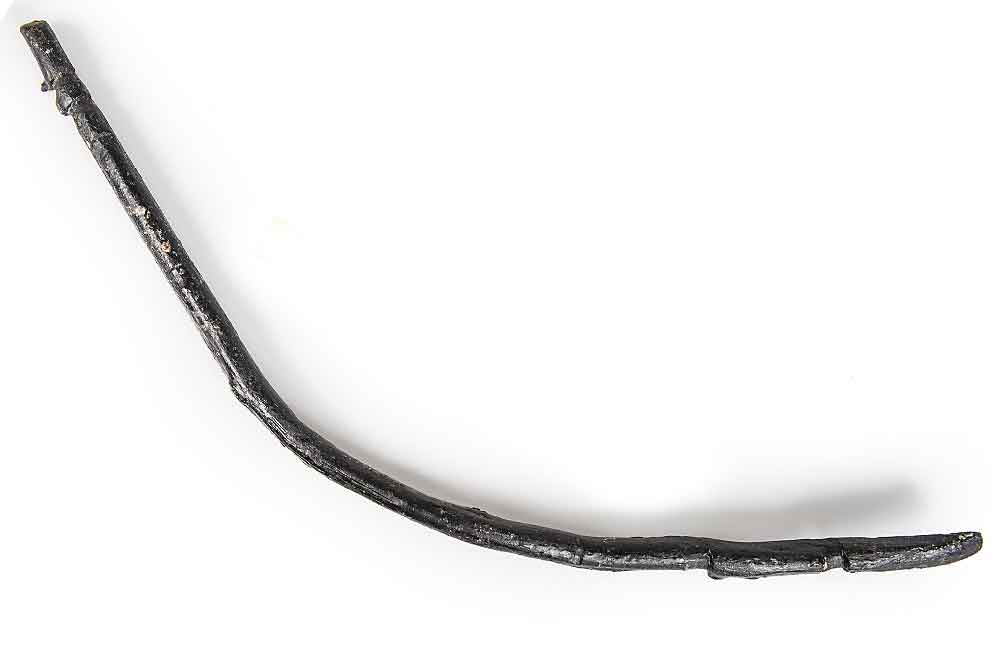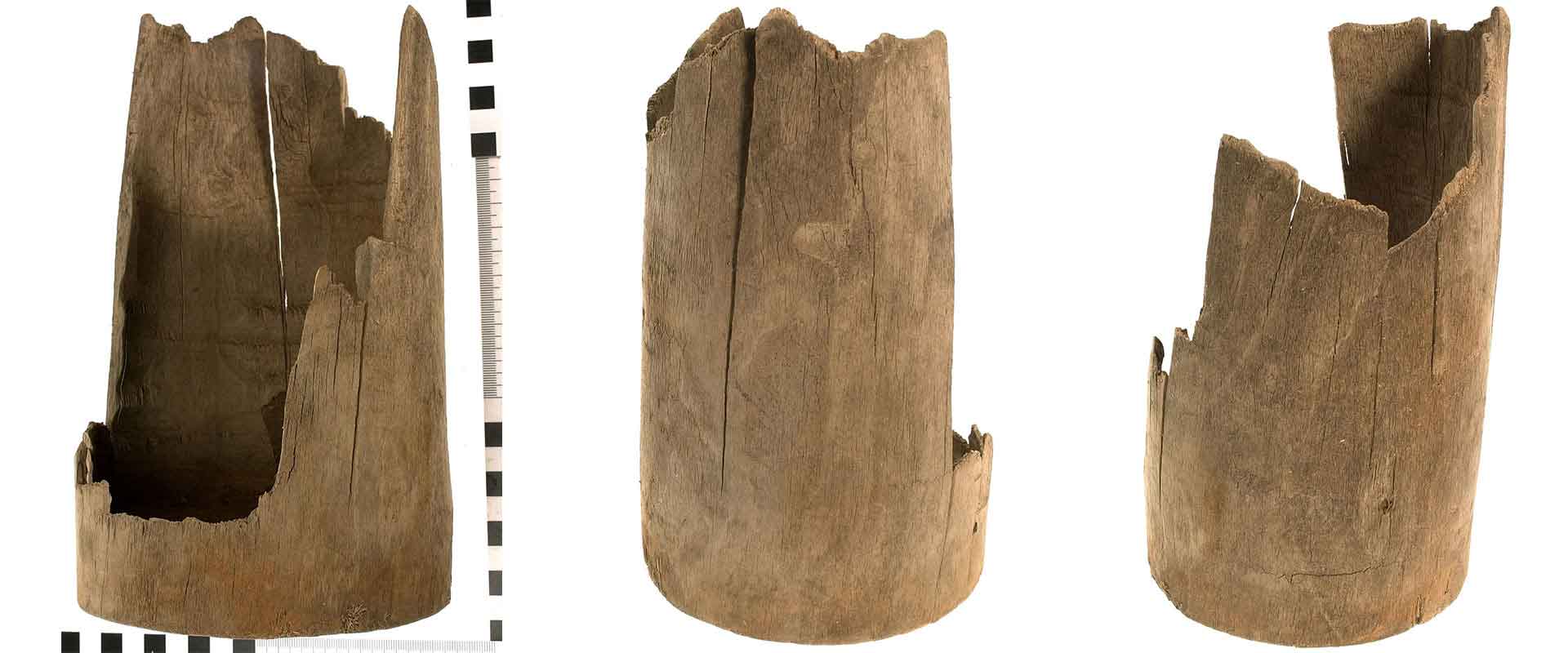Eleven shoe lasts of different sizes were found on board Vasa. They were used for making and mending shoes, as a foot-shaped form over which the shoe was shaped and assembled. All of the lasts are of wood, which was easily carved to the specific shape of the owner’s foot.
The period 1600-1800 is dominated by three principal types of shoes: tie shoes (in which the quarters end in wings which meet or overlap at the instep), boots and mules, all of which are found in the Vasa material. The tie shoes were closed by laces, buttons or buckles. Boots in the early 17th century had a narrow calf which was soft enough to be turned down. Mules, a type of heavy slipper, had no quarters (they were open at the back) and had thicker soles than slippers. In the first decades of the 17th century, built-up heels began to be fashionable in Sweden, and some are found on Vasa shoes, while most have the traditional flat sole. All types were made over lasts.
Personal possession
The lasts belonged to the crew’s personal possessions which they had brought on board. They are usually found as single items, as the same last was used to make both shoes of a pair, and shoes were not always made with distinct lefts and rights. In one case, two lasts of similar form and size were found in the same barrel with the owner’s other possessions. Did this owner keep a spare, or was this a case of two men with the same shoe size sharing a barrel?
The largest last is just over 28 cm long, which corresponds to a modern shoe size of 43 or 44 (9½ in UK/American sizes). The smallest is for a child, probably less than 8 years old, and is something of a mystery. Was it a souvenir, or did the owner plan to make shoes for a child at home?
